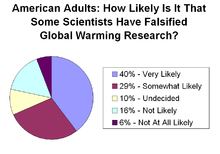Clean air farce is now just a tax
by CalWatchdog Staff | October 4, 2012 8:00 am
Oct. 4, 2012
By Katy Grimes
After several years of complying with the goals of AB 32, California’s business community is really worried. With the California Air Resources Board on the verge of launching a cap-and-trade program, California’s economy sits precariously perched on the edge of a craggy, dangerous cliff.
“Even if the program were perfectly designed and ready to implement, the higher costs would pose a great challenge to regulated industries that compete in global markets,” explained Shelly Sullivan, Executive Director for the AB 32 Implementation Group.[1] “Members of the AB 32 Implementation Group are extremely concerned that the cap-and-trade regulation is poorly designed, with serious flaws that should be immediately fixed.”
When California’s Global Warming Solutions Act[2], AB 32[3], was passed in 2006, it was sold to the public as a necessary step to reduce dangerous carbon emissions. California politicians gloated over being the first state to enact such an aggressive policy.
 [4]
[4]
The state’s unemployment rate was very low at the time at only 4.8 percent. Today it stands at 10.6 percent, and in some economically depressed parts of the state, more than 30 percent.
While most California residents seem to have heard about AB 32, the law and its many restrictive, expensive mandates are still a mystery for many, and state officials appear to like it that way.
AB 32 and fraudulent data
AB 32 required the California Air Resources Board to develop new regulations and create “market mechanisms” to reduce California’s greenhouse gas emissions to 1990 levels, by 2020.
AB 32 was based on supposed to be based on real climate science that proved that unless dangerous greenhouse gas emissions levels were reduced, the earth’s atmosphere would diminish and we’d all die.
But at the crux of the issue is altered data and science. The data originally produced by Intergovernmental Panel on Climate Change[5] scientists in the 1990’s were altered by government bureaucrats in order to create a crisis, as well as a demand.
The “Climategate[6]” scandal leaked disturbing e-mails and information from the environmental science community. The emails showed that once-reputable scientists and universities had doctored their statistics and withheld actual scientific evidence, and then silenced dissenting opinion about global warming. Critics say that this was done for political gain, but the California Air Resources Board continues to use this fraudulent “science.”
Another scandal involved the lead agent at CARB, who wrote the damning decision severely restricting diesel emissions. He was exposed as having a phony Ph.D. However, the CARB staff and Director Mary Nichols covered up the scandal until well after adopting the stringent diesel regulations. Hien Tran[7] did not lose his job at CARB, and still works for the state.
During the 2010 ballot initiative campaign of Proposition 23[8], which would have suspended AB 32 until the state’s unemployment fell below 5.5 percent, it was revealed that CARB has more than 1,175 employees, with an average salary of $85,000 a year or higher. Despite California’s economic free fall into recession, CARB has even added hundreds of new employees.
Companion to SB 375
A companion bill to AB 32, SB 375[9] by Sen. Fran Pavely, D-Aguora Hills, was passed in 2008. The Sustainable Communities and Climate Protection Act[10] required regional growth scenarios for land use and transportation improvements that took into account state-mandated goals for reducing greenhouse gas emissions. The stated intent of SB 375[9] was to control urban sprawl by confining new development to corridors located adjacent to transit hubs and roads.
 [11]
[11]
The actual intent is to get people out of their cars and comfortable suburban-style homes and neighborhoods, and force them into urban, city apartment complexes, close to bus and light rail services. Think Copenhagen, not Laguna Beach, San Diego or the beautiful and sprawling San Joaquin Valley.
Regional planning agencies in California have already adopted plans requiring nearly all new housing to be built at significantly higher density levels. A majority of the new housing built in San Francisco and San Jose would be “multifamily,” and concentrated along major thoroughfares.
“Green jobs” fallacy
Sanjay Varshnay, dean of the business college at CSU Sacramento, conducted a study on the costs of AB 32 to consumers and businesses, and found that costs could exceed $100 billion to businesses. Varshnay also explained that the “hidden costs” including higher energy prices, housing, food and transportation, will cost to the average family about $4,000 annually.
Varshnay’s study warned of heavy job losses due to AB 32 implementation. “We conclude that when California’s climate change program, AB 32, is fully implemented, the average annual loss in gross state output from small businesses alone would be $182.6 billion, approximately a 10% loss in total gross state output,” Varshnay wrote. “This will translate into nearly 1.1 million lost jobs in California. Lost labor income is estimated to be $76.8 billion, with nearly $5.8 billion lost in indirect taxes. This decline in revenues will have a severe impact on future state budgets.”
A smear campaign on Varshnay and his study was launched by well-known Democratic operatives, and widely reported in the news media as fact.
Supporters of AB 32 continue to claim that it will create a windfall of new “green jobs.” Early on, they pointed to Spain as a model, but lately they’ve been silent on how much greener the grass is in Spain because Spain’s green jobs program was an unmitigated disaster. For every one “green job” Spain created, 2.1 private sector jobs were cut. And each new “green job” in Spain cost $700,000.
It sounds as if Spain had CARB running their green jobs program.
Cap-and-trade, or tax-and-raid?
While AB 32 provides the governor the ability to suspend the emissions caps for up to one year in the case of an emergency or significant economic harm, Gov. Jerry Brown has instead championed the law despite the obvious economic damage being done to the state.
AB 32 also gave the California Air Resources Board the power to:
* Adopt a regulation requiring the mandatory reporting of greenhouse gas emissions;
* Convene an “Environmental Justice Advisory Committee” to advise the Board in developing the Scoping Plan and any other pertinent matter in implementing AB 32;
* Appoint an Economic and Technology Advancement Advisory Committee to provide recommendations for technologies, research and greenhouse gas emission reduction measures.
In December 2010, CARB created a cap-and-trade program to auction off carbon allowances to California businesses, forcing these businesses to pay billions of dollars just for the privilege of continuing to do business in California.
The “cap” in cap-and-trade is the legal limit on the quantity of greenhouse gases a region or business can emit each year, and “trade” means that companies can swap or trade emission permits among themselves.
Prior to California developing a cap-and-trade program, one of the most important environmental programs tied to the United Nations Agenda 21[12], was the U.S. cap-and-trade legislation.
But when the cap-and-trade legislation failed to pass in the U.S. Senate, the Environmental Protection Agency[13] instead took it upon itself to regulate greenhouse gases, ignoring Congress.
CARB has acted in much the same way, operating autonomously and seemingly without any regulation by the Governor or Legislature.
However, what’s missing from nearly every discussion with CARB is that the key greenhouse gas emission reduction tool of the program is the declining cap, not the auction. The auction is unnecessary.
This is what’s known as a tax on business.
The state’s non-partisan Legislative Analyst’s Office recently wrote[14], “An allowance auction is not necessary to meet the AB 32 goal of reducing greenhouse gas emissions statewide to 1990 levels by 2020.”
When CARB first adopted a cap-and-trade program in 2010, it bragged about being the first program of its kind on this scale in the United States. However, there is already one such group in the northeastern United States, the Regional Greenhouse Gas Initiative[15], which operates similarly.
So, CARB created the Western Climate Initiative, ostensibly “to link its cap and trade system to other states and provinces, such as Quebec.”
But so far, the cap-and-trade program has been a total bust, primarily because CARB is working under a design-a-you-go plan. But don’t count CARB out just yet. They haven’t extracted their pound of economic flesh from the business community yet.
With a manufacturing sector that generates more than $200 billion every year, and employs more than 2 million Californians, according to the California Manufacturers and Technology Association[16], California businesses cannot afford this unnecessary auction designed to exact social and environmental justice from the business community.
California businesses went along with the AB 32 party for a few years because they thought they had to. But as the November cap-and-trade auction draws near, and with Director Mary Nichols having tirades at every CARB board meeting, it has become abundantly clear that this is no non-partisan compromise; it is partisan revenge on California business.
- AB 32 Implementation Group.: http://www.ab32ig.com/
- Global Warming Solutions Act: http://www.arb.ca.gov/cc/ab32/ab32.htm
- AB 32: http://ballotpedia.org/wiki/index.php/California's_AB_32,_the_%22Global_Warming_Solutions_Act_of_2006%22
- [Image]: http://www.calwatchdog.com/2012/03/05/california-remedy-for-eco-guilt/220px-public_opinion_on_falsified_global_warming_research-3/
- Intergovernmental Panel on Climate Change: http://www.ipcc.ch/
- Climategate: http://blogs.telegraph.co.uk/news/jamesdelingpole/100017393/climategate-the-final-nail-in-the-coffin-of-anthropogenic-global-warming/
- Hien Tran: http://killcarb.org/tranpage.html
- Proposition 23: http://ballotpedia.org/wiki/index.php/California_Proposition_23,_the_Suspension_of_AB_32_(2010)
- SB 375: http://www.arb.ca.gov/cc/sb375/sb375.htm
- Sustainable Communities and Climate Protection Act: http://www.arb.ca.gov/cc/sb375/sb375.htm
- [Image]: http://www.calwatchdog.com/2012/04/18/california-declares-land-war-on-families/apartment-block-russia/
- United Nations Agenda 21: http://www.un.org/esa/dsd/agenda21/
- Environmental Protection Agency: http://www.epa.gov/captrade/
- wrote: http://asmdc.org/members/a31/attachments/LAOCapandTradeResponse.pdf
- the Regional Greenhouse Gas Initiative: http://en.wikipedia.org/wiki/Regional_Greenhouse_Gas_Initiative
- California Manufacturers and Technology Association: http://www.cmta.net/
Source URL: https://calwatchdog.com/2012/10/04/clean-air-farce-is-now-just-a-tax/